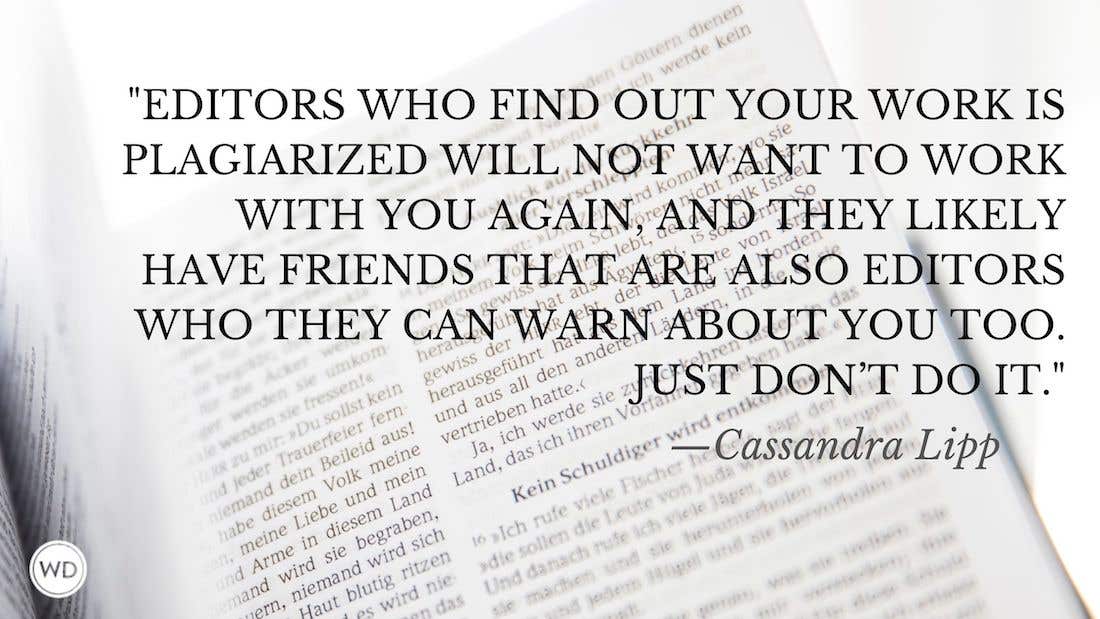Poetry Exercises to Help You Write Better Prose
Poet and author Michael Bugeja explains how exploring the techniques and principles of poetry can help you become a better writer. Here are some exercises Bugeja suggests to help you improve your prose through poetry.
To publish prose, writers have to use the best words to inform or enlighten their readers. Poets, however, have to use the best words in the best order to deliver readers into a higher realm of consciousness or truth. That alone is reason enough to learn poetry's basic elements. But there are other, more practical payoffs, if you write prose.
For starters, poetic techniques will shape and sharpen your diction and style, enriching your work with imagery and tone. You can edit and revise more effectively and even turn sections of prose manuscripts into publishable poems.
But first, you need to understand how a poem is made.
The poetic process
Poets are moved to write the way a minstrel is moved to sing. The poetic urge emanates from a wellspring of beauty, love and truth, or darker cousinsruin, fear, deception. Blake heard voices. Dickinson heard hymns. Plath heard confessions.
Prose writers usually hear other voiceseditors', readers', agents'. Hard to imagine an editor screaming into a poet's cell phone: "Give me a villanelle on death using resurrection symbolism for the April issue!" But that, in itself, has built-in rewards, beginning with deadlines. Poets experience few of them and so may ruminate and revise to perfection. Thus, poets are the philosophers and wordsmiths of our profession.
Most poets choose topics containing metaphysical insights or hard-earned truths. These are conveyed throughout a poem via themes depicted by images and metaphors that build in intensity, foreshadowing an epiphany, or universal truth, in the ending.
Moreover, poetry is the mother of drama and, as such, also employs soliloquiesmeditations on matters of substance, usually told in the introspective voice of a confidant.
Unlike other genres, poetry doesn't use paragraphs or chapters but lines and stanzas. A line is as long or short as the poet requires to present an image or an idea in free verse and/or adhere to a certain meterrepeating pairs of light and hard stressesin formal work.
A poetic line packs punch because it usually opens powerfully, conveying topic and theme; states one clear idea per unit; begins and ends with a strong noun, verb or adjective; and plays off lines immediately above and below it, as in this excerpt from one of my sonnet sequences appearing in the collection Millennium's End:
You know the cause of death but not my name
Quilted like initials on a sleeve in Scarlet, the blood color. I shared the same
Needle as my idol Hester Prynne
And sewed my fate....
— from "AIDS," Prairie Schooner
As you can see, the first line presents a cogent idea: Society focuses on AIDS rather than on the lives that it claims. Hold that thought. It changes when attached to the second line, about quilted initialssymbolism associated with the AIDS quilt. That line also dissolves into blood imagery in the next unit, which dissolves again, introducing needles (another AIDS symbol). That quickly resurrects the heroine of The Scarlet Letter.
The poem is propelled, line by line, building intensity. Now comes a stanza break, white space between groups of lines. That, too, has a purpose. Stanzas contain lines expressing similar but related ideas. A stanza break is tantamount to section breaks in fiction and nonfiction or fades between scenes in a script.
Stanzas add momentum. Consider these concluding lines of the above poem, culminating in a final couplet:
You marked me every day when I was ill,
Then lowered me into an unmarked plot
As if to quarantine me here for good.
Now the roles are reversed. Now I can out
You from the grave in gratitude and would
Engrave your future, suture it on gowns,
Knowing whose time is up and whose is down.
Keep in mind that poems are as varied in style and form as music, from country and rock to folk and operaand beyond. No one poem can represent the range and richness of verse. But the above excerpts do include common elements of art and craft and so serve our purpose here.
Now that you know the basics, let's apply them.
Making introductions
Exercise: Scan the Norton anthology for opening lines that interest you or that somehow relate to your latest assignment. Select a line whose theme matches that of your next short story, essay or article. Use the line as an epigraph so that it will generate a strong theme. For example, you might use "Tell all the Truth but tell it slant" for:
- A short story with a confessional motif for an arts magazine.
- An essay about "propaganda" for an opinion magazine.
- An article about public relations for a trade magazine.
Goal: To make your introduction explode with insight and interest, articulating topic and theme as concisely as possible.
Poems are known by their first lines. Verse is even indexed that way in many collected works and anthologies, including the Norton Anthology of Poetry and Oxford Book of English Verse. A poem's first line is as important as a news bulletin's lead. That's no coincidence either. Before CNN and USA Today, there were ballads and epics, the eyewitness news of yore.
Consider these opening salvos from Dickinson:
The soul selects her own Society (from "303")
After great pain, a formal feeling comes (from "341")
Publication is the auction (from "709")
Tell all the Truth but tell it slant (from "1,129")
"First Line" Technique: Poets compose first lines that startle or challenge the reader, expressing topic and theme in as few words as possible. The lines above do that. Take a closer look at the words setting topic/theme: soul/society; pain/formality; publication/auction; truth/slant.
To illustrate, consider this Dickinson poem ("185"):
"Faith" is a fine invention
For gentlemen who see,
But Microscopes are prudent
In an emergency!
The poet begins with a stunning first line whose operative words are faith as topic and invention as theme. The thematic word is a homonym: in the first line, it means: "Faith is a fine fiction." As soon as "microscope" is mentioned, however, we realize the word also means discovery. Thus, we reread the poem with deeper insight: Faith as invention and discovery. Dickinson accomplished that universal truth in 16 words.
Your prose introduction has to do the same, conveying topic and theme and enticing readers into your piece.
Toning up
Exercise: Scan anthologies for poems that use the word voice or otherwise address the sense of sound, as in this excerpt from Edith Sitwell's "The Canticle of the Rose":
The Rose upon the wall
Cries I am the voice of Fire:
And in me grows
The Pomegranate splendor of Death, the ruby garnet
Almandine
Dews: Christ's Wounds in me shine!
Note the heightened language of emotion especially in the fourth line. Poems about voice or sound usually live up to their billing. Read enough such poems to get a musical feel for that level of diction so that you can employ it at your discretion in your prose.
Goal: Scrutinize your latest draft, isolate every cliched phrase or passage, and revise as a poet might by focusing on tone as much as content.
A poet's voice is his or her most valued possession. Through it, the poet sings the chromatic scale of human emotion, as Shakespeare did with mellifluous dignity, describing love: "Let me not to the marriage of true minds/ Admit impediments...."
Tone Technique: Poets emphasize tone not to master style, as many prose writers do, but to elevate their voices above the cacophony of contemporaries. Only then will they be heard above such topics as love, religion, nature, death, etc.usually addressed by lesser poets (read: unpublished ones) using cliched or uninspired language.
As contemporary poet Molly Peacock puts it, "Often cliches of language are in fact cliches of feeling. When you want to make your feelings acceptable, you end up resorting to cliches and the writing becomes shallow. An example is the cliche 'green as grass.' Grass is never green in the presence of strong emotion. It is mint green with a tentative sweetness or green as St. Puce, the flea, who, according to Nathanael West, lived in the armpit of our Lord. It is chive. Chartreuse. Like tinsel. Like straw."
Prose writers would do well to emphasize tone by avoiding cliches, using heightened language even in the most mundane of assignments.
Consider this excerpt from a recent essay about the Littleton shooting, published in The Quill:
We have been inundated with mega- and sound-bytes of terror. Pundits tell us to lose the guns and hire more armed guards, blaming or pardoning parents in interactive debates. In congressional hearings, witnesses reduce those debates to violent video games, movies and homepages. Meanwhile, our collective wasteland enlarges when Columbine coverage tops that of Kosovo. Images of both are similar sensational clips accompanied by "rat-tat-tat" of real ones (to which we have grown accustomed since Waco) casting a dull veneer on TVs, which let in more secondhand pain than light.
My essay, titled "Writing through Littleton," was revised more than a dozen times because so much had been published about the Columbine tragedy. I had to ensure that each word mattered, weeding out cliches. At www.writersdigest.com/wd0400/bugeja.html, you'll see my essay and the related poem that appears in my latest collection, Millennium's End (www.archer-books.com).
Wrapping up
Exercise: Scan poems for title and first/last lines. Some poems will not provide the clean examples of excerpts cited above, but many will. Record those in a journal or in a computer file to give you a feel for the importance of structure.
Now do the same with your prose. Ask yourself:
- Is there unity among these three basic elements?
- Are topic and theme clear in the introduction?
- Does the theme in the introduction lead to the truth in the ending?
Goal: To leave your readers feeling as if they have experienced a journey with author as guide.
We've covered opening lines and poetic voice. All that's left now is endings. The last line is the capstone. Each preceding line or stanza has deepened the theme, foreshadowing universal truth in the ending. In a word, the title and first/last lines provide structure.
You can demonstrate this easily by reading entries in any anthology and collapsing poems into title and first/last lines, as in these examples:
On Shakespeare
What needs my Shakespeare for his honored bones
That kings for such a tomb would wish to die.
— John Milton
In an Artist's Studio
One face looks out from all his canvasses,.
Not as she is, but as she fills his dream.
— Christina Rossetti
Poetry reminds us that literature is a journey. The journey has a name (title), a purpose (topic), a vehicle (theme) and a destination (ending). Prose writers sometimes forget that, focusing on research, fact, characterization and myriad other elements that are rendered meaningless without this basic structure.
Poetry is an important prose tool. It reminds the novice about the function of basic elements, the apprentice about the necessity of structure and the professional about deliverancenot of a manuscript to your editor, but of an epiphany to your reader.
Michael J. Bugeja is a Writer's Digest board member; poet and essayist; and a professor and special assistant to the president at Ohio University and the author of The Art and Craft of Poetry.








